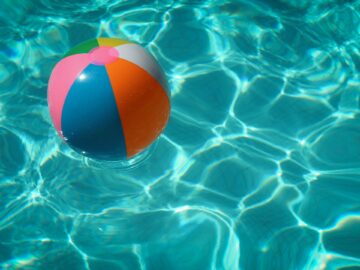Platypuses are strange animals. One glance at them is enough to raise eyebrows. It’s a small animal with the tail of a beaver and a duck’s bill. If that isn’t weird enough, it’s also a mammal that lays eggs. It may seem like a mythical creature that’s full of contradictions, but that’s the reality of a platypus.
One famous platypus that your kids may be familiar with is Perry the Platypus from the animated series Phineas and Ferb. Like the secret agent Perry, real-life platypuses are also mysterious and full of surprises. If you want to learn more about these odd animals, let’s take a look at these intriguing platypus facts!
Phenomenal Platypus Facts You Shouldn’t Miss
It’s a running joke in Phineas and Ferb to mention that platypuses don’t do much, but the reality is quite the contrary. Platypuses are interesting animals that do a lot more than sit around. While they may not be secret agents, it’s still fun to learn about them. Here are some facts you shouldn’t miss:
- Early Scientists Couldn’t Believe Platypuses Were Real
Courtesy of Klaus
When 18th-century English scientists received a platypus specimen from Australia, they thought it was a hoax. After all, the animal looked like someone had stitched a duck’s head to the body of a beaver or otter. It’s hard to believe that such an animal existed.
However, zoologist George Shaw verified that the platypus is a real animal. He was the first one to describe the platypus scientifically in 1799. He gave it the scientific name Platypus anatinus, which translates to “flat-footed duck.” Later scientists renamed it Ornithorhynchus anatinus, meaning “duck-like bird-snout.”
It wasn’t until around 100 years later that scientists discovered these animals could lay eggs!
- Platypuses Lay Eggs Despite Being Mammals
Scientists consider the platypus a mammal because it makes milk and is covered in fur. However, most other mammals give birth to babies. On the other hand, platypuses lay leathery eggs like reptiles.
Contrary to popular belief, platypuses aren’t the only egg-laying mammals on Earth. Four other mammal species do so, and all of them are echidnas. Collectively, platypuses and echidnas are known as monotremes.
Scientists studied the genes of platypuses and found surprising results. Although its DNA is similar to other mammals, it shares some genes with reptiles and birds. How strange is that?
- Platypuses Are One of the Few Venomous Mammals
Courtesy of Meg Jerrard
Venom is a natural weapon many animals use to hunt prey or defend themselves against predators. However, it’s more common in reptiles, fish, and invertebrates. Only a few living mammals have venom, and the platypus is one of them.
Male and female platypuses have spurs on their back legs. However, male platypuses have hollow spurs connected to a venom-producing gland. By using these spurs on potential predators, these animals can deliver a painful sting that can last for weeks! Now, it’s best to think twice before attempting to cuddle a platypus.
- Platypuses Can Detect Electrical Signals
Courtesy of Medical News Today
Platypuses dive to the bottom of rivers and creeks to get their food. Although they have eyes and a nose, they can’t use vision or smell to find their prey. So, how do they catch meals?
Platypuses have an extra sense that we don’t have — they can detect electrical signals. All living things produce tiny jolts of electricity in their bodies, and platypuses use this to their advantage. With special organs in their bills, they can find these electric fields and hunt animals even with their eyes, ears, and noses closed.
This ability to detect electric fields, called electroreception, is present in sharks and rays and some bony fishes. It’s absent in all mammals except monotremes (platypuses and echidnas) and the Guiana dolphin.
Watch this informative video to discover how electroreception works in sharks and rays!
- Platypuses Don’t Have Stomachs
Our stomachs play an essential role in digesting food. It breaks down food before passing it down to our intestines. Platypuses, however, don’t seem to need this organ. They don’t have stomachs, and their gullets connect directly to their intestines! Isn’t that odd?
- Baby Platypuses Have Teeth, But Adults Don’t
Another fun fact about platypuses is that their babies are called puggles. Puggles hatch with ten to twelve teeth, but they lose them before they leave their burrows. Adults just have hard pads called ceratodontes on their jaws instead of teeth.
- Platypuses Use Gravel to Grind Their Food
Because platypuses don’t have bills, they can’t chew hard food. However, this isn’t a big issue for these egg-laying mammals. They also place tiny rocks in their mouths when they pick up their meals. The gravel acts like makeshift teeth and helps platypuses digest their food more easily. How clever!
- Platypuses Don’t Have Udders
Courtesy of Ronald Bradford
Most mammals have udders or teats from which their babies suckle milk. On the other hand, platypuses don’t have these. Although they have mammary glands, mommy platypuses produce milk directly on the skin of their abdomen.
- The Webbing on Platypuses’ Feet Is Retractable
Like otters, platypuses have webbed feet that act like flippers to help them swim. On land, they don’t need to use the webbings, so they retract them when they travel out of the water.
- Platypus Tails Are Multifunctional
The flat, broad, paddle-shaped tail of a platypus has many uses. For example, it helps the animal steer itself while swimming. Moreover, it helps the platypus survive when food is scarce. It stores almost half of its body fat, which it can use as an energy source when it can’t find meals.
Before laying eggs, female platypuses line their burrows with leaves and reeds. They use their tails to drag these materials to the burrow. Then, when they finally lay eggs, they warm them up with their tails.
Courtesy of Brisbane City Council
- Platypus Ancestors Were Huge
Modern platypuses are small, around 17 to 20 inches (43–50 cm) long, and weighing up to 5 lb 5 oz (2.4 kg). However, like many animals, their ancestors were considerably bigger. By examining fossil records, scientists discovered that platypus ancestors grew more than three feet (91 cm) long. That’s almost double their current size!
- Platypus Fur Is Waterproof
The body and tail of a platypus are covered in fur, and some researchers have likened its texture to that of a mole. Its fur is waterproof and can trap a layer of air to keep its skin warm. The air also helps the animal stay buoyant underwater.
- Platypus Fur Glows Blue-Green Under Ultraviolet Light
Courtesy of John Morton
In Phineas and Ferb, Perry the Platypus has blue-green fur. On the other hand, real-life platypuses have brown fur. However, when you put these animals under ultraviolet (UV) light, things get much weirder.
Platypus fur glows blue-green under UV light! That’s right—the same color as Perry. That’s a shocking coincidence!
Here’s what Dan Povenmire, creator of the Phineas and Ferb series, has to say about it.
Frequently Asked Questions on Platypuses
Where do platypuses live?
Platypuses live in eastern Australia, with habitats ranging from Queensland to Tasmania. They live in bodies of water like rivers, streams, and lakes. If you visit these areas to see them, you’d have to be lucky. These animals are only active at night. They’re also near threatened because of habitat loss.
Read more about conservation efforts through this website!
What do platypuses eat?
Platypuses are carnivorous, which means they eat other animals. They feed on worms, shrimps, crayfish, insect larvae, and shellfish. They dive underwater to catch their food and store it in their cheek pouches. Then, they eat their meals on the water’s surface.
How long do platypuses live?
Platypuses reach adulthood when they’re around 12 to 18 months old. In the right conditions, they can live up to 20 years.
Watch a platypus in action here!







